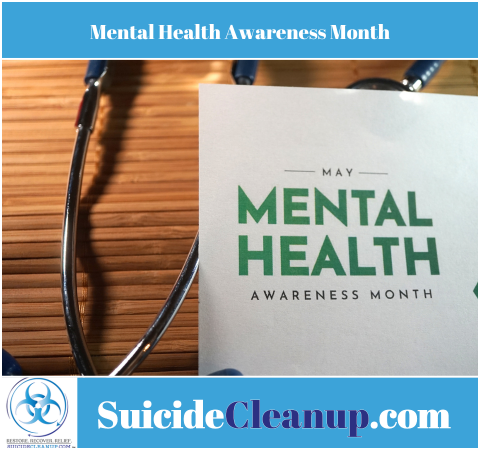
How Suicide Doors Got Their Name
July 29, 2022
Remembering Sladjana Vidovic
September 26, 2022It’s estimated that murder-suicides make up between 1,000 and 1,500 deaths in the US per year, although the exact number is not known. The issue has been gaining more exposure and coverage than ever before, leaving many with new questions on the following:
- Are incidents increasing?
- Why are these situations happening?
- What incidents fall under the definition of a homicide-suicide?
While it sounds pretty straight forward, there has been confusion about how the term has been applied to different situations. Broadly speaking, a murder-suicide (also called suicide by murder) is a “dramatic, violent event” in which an individual murders themselves after killing one or more people.
What is Considered a Murder-Suicide?
These incidents typically appear as:
- A perpetrator kills themselves after exhibiting homicidal behavior and/or thoughts.
- Suicide occurring with a murder. This broad definition could vary from the intentional crash of a car involving the killing of another person, or a bombing that intentionally killed the perpetrator as well.
- The murder of a police officer or bystander during a suicide by cop.
- Someone that kills themselves after a murder by proxy (having someone else kill their victim, most commonly a hitman).
- When a suicide occurs after or during a homicide by someone else.
- When someone kills to intentionally receive a death sentence (yes, this happens).
- When two or more people consent to end their lives together, resulting in the killing of themselves afterwards. The events of Jonestown is a famous example of this.
Merciful cases also exist, these scenarios typically resembling:
- Death in the process of murdering someone else in self defense.
- Death in the process of lawfully killing any individual intending to fatally harm others.
- Any other lawful killing that results in the suicide of an individual.
Due to the effect on the family and community, murder-suicide is regarded a public health problem.
Are Incidents on the Rise?
No, incidents do not appear to be increasing. The last report released by the VPC in 2020 estimated a total 1,240 murder-suicide deaths over 2019. This number is within an average range to previous annual estimates. It’s important to note, however, that these are estimates. As of 2022, there is no universal national database tracking the issue the way other homicidal situations are. This leaves the exact number of cases unknown.
In lieu of a federally backed database, research driven non profit organizations like the Violence Policy Center (VPC) release comprehensive analytical reports. Thankfully, these estimates have been fairly reliable since the VPC started collecting in 2002.
Why does it seem like cases are increasing?
It appears that they are increasing as events gain more news coverage and exposure. More coverage comes more attention to the topic in general. Social media, newspapers, and publications are discussing the topic more than ever.
The media coverage has been good and bad. More coverage means more awareness but the motives appear questionable. Flynn et al. (2015) conducted the first study on how homicide-suicide stories are reported and found that stories are selected based on extremes. Reporters have a tendency to promote negative mental health stereotypes and inaccurate stories about the perpetrator and victim.
Inaccurate reporting misleads readers about a serious public health problem. More effort needs to be taken respectfully and accurately covering the topic to further advance with homicide-suicide and mental health issues in general.
What’s Really Causing Murder-Suicides?
While there is no definitive answer, analysis and research has helped advance an understanding of the issues. There have been several studies conducted to investigate potential causes since the early to mid 20th century.

Did You Know? Early psychoanalyst Sigmund Freud (1856-1939) proposed that an individual’s “death drive”–their motivation for death and destruction–got twisted from childhood trauma.
Findings Based On Modern Research
Much of the research that started in the mid 1950s has been consistent even as crime grew during the late 20th century. The risk factors for perpetrators have largely remained the same.
From 1991 to 2005 Travis et al. (2007) found 100% of the perpetrators in England and Wales were male. These findings were also consistent with 76% of the previous papers they reviewed. 90% of the perpetrators in previous studies were also male.
In 2002, Malphurs and Cohen analyzed 673 homicide-suicides from 191 different national newspapers. They concluded that 77% of headlining homicide-suicide involved an intimate partner situation, especially if the perpetrator was 55 years or older. Any younger than 55 years old and the amount of headlining domestic violence homicide-suicide cases dropped to 57%.
There seems to be a strong link between family and caregiving. One study has even found that 90% involved parents murdering children then killing themselves. The incidence rate is even more apparent when the perpetrator is taking care of a victim whose health is declining. In fact, it’s been estimated that 20% of elder Americans die each week in a homicide-suicide situation.
Most authors agree that perpetrators are more often than not men suffering from clinical depression. A 1990 study by Rosenbaum implied a strong risk factor for couples that had records of physical abuse and frequent separations.
Where Further Research is Needed
One area for further research is looking for insights on when these perpetrators receive their diagnosis. Are male caregivers experiencing clinical depression after their spouses’ health decline? Are they diagnosed following the attack? What are the implications of being a male caregiver? Similar studies have suggested statistical differences between male caregivers and female caregivers, implying caregiver perception as a factor.
Does the type of ailment create a greater burden and thereby increase the risk of domestic violence? It’s difficult to tell. The perpetrator’s history with domestic violence varies depending on the study. Most studies vary widely from 15-25% showing a record of physical abuse. A 2002 New Hampshire study conducted by Campanelli and Gibson found 54% of the perpetrators had prior records of domestic violence.
Who We Are
SuicideCleanup.com has been helping families and communities during a suicidal tragedies for over 20 years. We are the nationwide emergency company called to clean and restore properties after a suicide so families don’t risk the exposure themselves.
Our goal is to make a difference. Thus, beyond our services, we publish well thought out, well researched articles similar these to raise awareness to very serious public issues. We welcome you to take a look through our other articles and share information helpful that may be helpful for your friends and family.
Sharing can potentially save you, your friend’s, and your family’s lives, so please consider sharing our articles on your Facebook, Twitter, or Instagram. Feel free to use any of the information on our website in your own research, so long as you credit our page accordingly. Thank you!
Additional Useful Resources
Office of Justice
Violence Policy Center
Journal of the American Academy of Psychiatry and the Law Online: Murder-Suicide: A Review of the Recent Literature by Scott Eliason (September 2009), 37 (3) 371-376
NIJ Journal: Men Who Murder Their Families: What the Research Tells Us by Bernie Auchter
https://en.wikipedia.org/wiki/Murder%E2%80%93suicide




